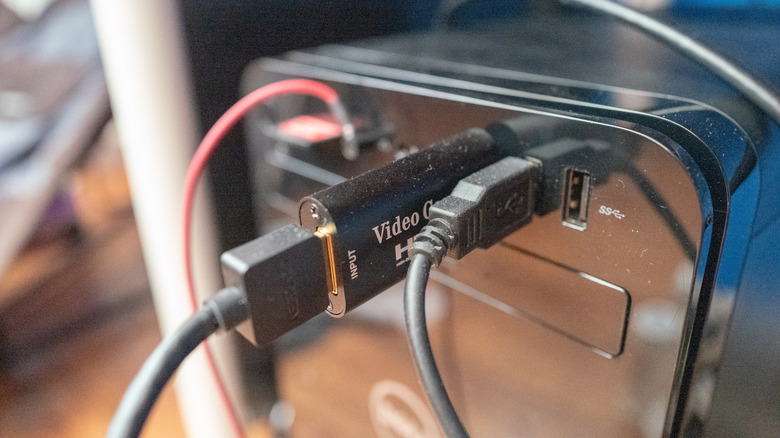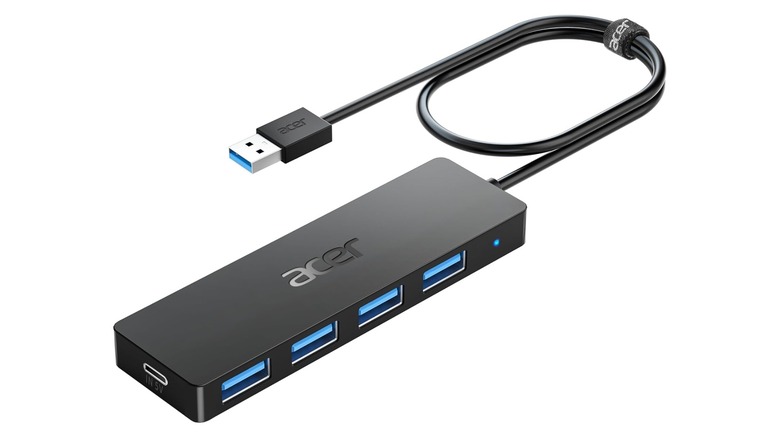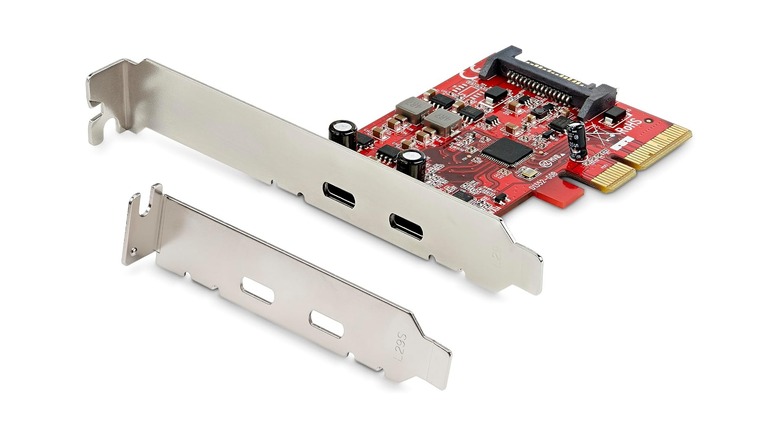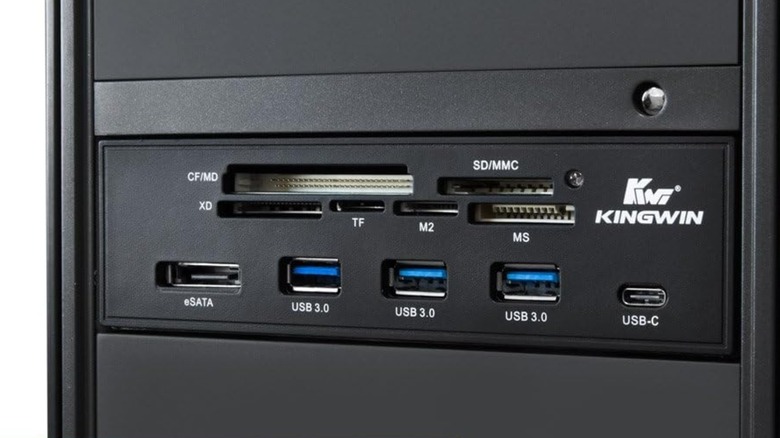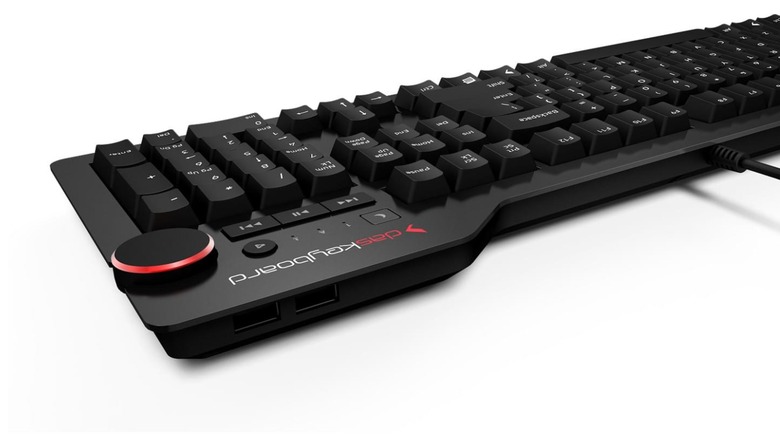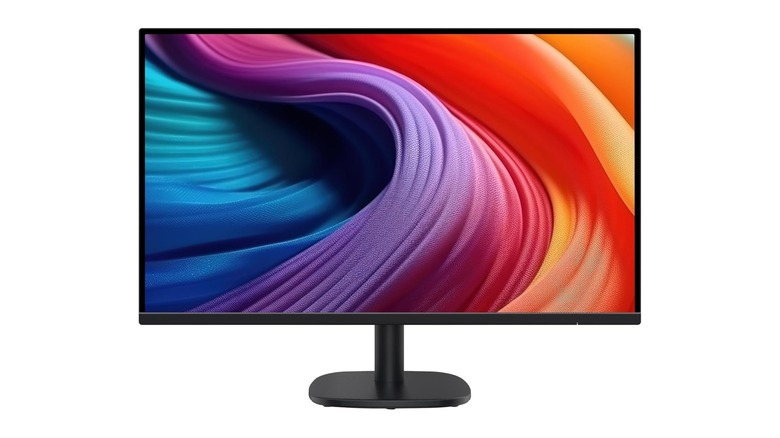5 Ways You Can Add More USB Ports To Your PC
We may receive a commission on purchases made from links.
Computers are extremely versatile machines that can take advantage of countless other devices. Even outside of external storage and charging cables, some of the most useful USB gadgets you can buy will improve your PC experience by simply plugging them in at your leisure. Unfortunately, your options aren't unlimited, as many motherboards and PC cases lack a wider number of ports. You're always going to be limited by what the manufacturers can offer unless you can find a way to add more USB ports to your PC.
Luckily, there are methods you can take advantage of to make your computer capable of connecting to more devices at once. Not every single method will work for you, with some requiring certain cases and others needing a compatible motherboard. But with a bit of effort, ingenuity, and the right accessories, you might be surprised how much further you can stretch the limit of available ports. Here are some things you can try.
Use an external USB hub
An external hub should really be the first thing you consider when wondering how to add more USB ports to your computer. A four-port Acer hub is a prime example of something both capable and cheap at just around $15, turning one USB port into four with practically no further setup required. This top-selling USB accessory is made for laptop users, but it's perfect for those with a full-sized PC as well. With the addition of a power source, you can even use it to charge your phone or transfer data from full-sized hard drives.
The biggest downside to USB hubs is how you might miss out on faster transfer speeds. Plugging a USB 3.0 hub into a faster port will limit you to whatever the hub itself can handle, making it much less useful for those performing lots of copying and pasting. If you try to add even more ports by just daisy-chaining a whole group of these devices, you'll probably struggle to make use of any of them.
Add a PCIe expansion card to your motherboard
For those with the right motherboard, a PCIe expansion card will let you add more USB ports without taking up the ones already available to you. Something like the StarTech USB-C card will add these ports right alongside your GPU, which you can then use to connect data devices and peripherals. It unfortunately lacks a power source of its own, so you'll need to rely on something more if you want to use it for charging. That's pretty much the only major restriction that might hinder your use of this card's available USB sockets.
Of course, these expansion cards are quite restrictive in their own right for those who aren't prepared to use one. They won't be compatible with most laptops, since they require a compatible motherboard. Additionally, PCIe lane sharing impacts performance on certain motherboards, possibly hindering your GPU's performance or leaving you unable to use some internal storage slots. If you've planned for all of that, though, there really isn't any further downside to using one of these expansion cards.
Use a front panel hub with a compatible PC case
Like PCIe cards, front panel hubs are only really available to a certain subset of users. The Kingwin powered USB hub will let you plug in just about any device you could dream of, but only if your PC case has an open 5.25-inch bay for it. Laptops obviously can't take advantage of these hubs, and most PC cases these days will also lack any space for one. Many of the best budget PC cases for your build won't be able to support a front panel hub, forcing you to go with something that's either more expensive or much older.
If you do end up having an available front panel spot, these hubs are just about as useful as the PCIe cards. You'll get your hands on multiple ports for not much trade-off at all, and some hubs will even include spots for SD cards and eSATA plugs. This reduces the number of adapters you need to use, further freeing up your available USB ports. Just be warned that these products tend to be mixed in their reliability, with quite a few owners noting their difficulty in getting them to work or last very long.
Take advantage of keyboard passthrough
Certain keyboards actually come with extra USB ports of their own. Some of the best keyboards on Amazon include passthrough, allowing you to plug in extra peripherals without taking more space from your PC's sockets. These aren't often designed with data transfers in mind, but high-end models — like the Das Keyboard 4 Pro – can offer all that and more. It even includes two ports despite only connecting with one plug, whereas many other keyboards with passthrough only provide one.
You're pretty much always going to need a keyboard for your computer, so adding an extra USB port on one will always give you more options than usual. While not all passthrough ports will be helpful for data transfers or powered devices, they still provide an easier way to deal with plugging in multiple devices at once. They can even help with peripherals if your motherboard only has faster ports. Many of the most popular mice only need USB 2.0, so plugging them into your keyboard will free up the faster ports on your PC for any external storage you might have.
Use your monitor USB ports
Although this isn't a universal benefit, various computer monitors will include a number of USB ports. Even a simple Amazon Basics monitor has four available sockets that can support peripherals like a keyboard and mouse. These take advantage of upstream and downstream ports, which means you'll still need to plug an extra USB cable into your computer to get anywhere with them. Still, this leads to more available ports overall, as well as making them easier to access without needing to constantly move over to your case or motherboard.
Having these ports on your monitor is useful for more than just your PC. There are plenty of surprising gadgets you can plug into your monitor's USB ports, including desk fans and mini-vacuums. It's easy to just think of flash drives and charging cables when you look at these sorts of devices, but having more space to connect new things might encourage you to look a bit further. After all, you might as well use those empty slots for something once you've plugged in everything else.
